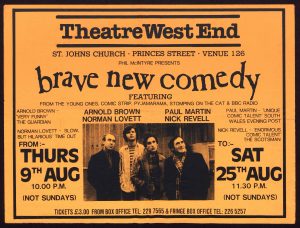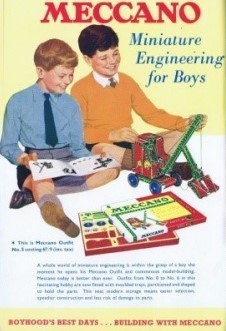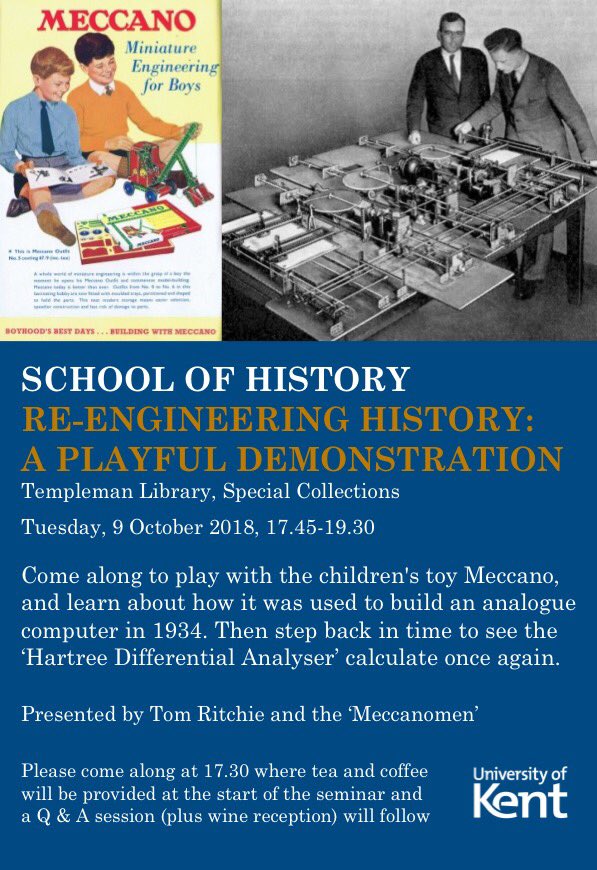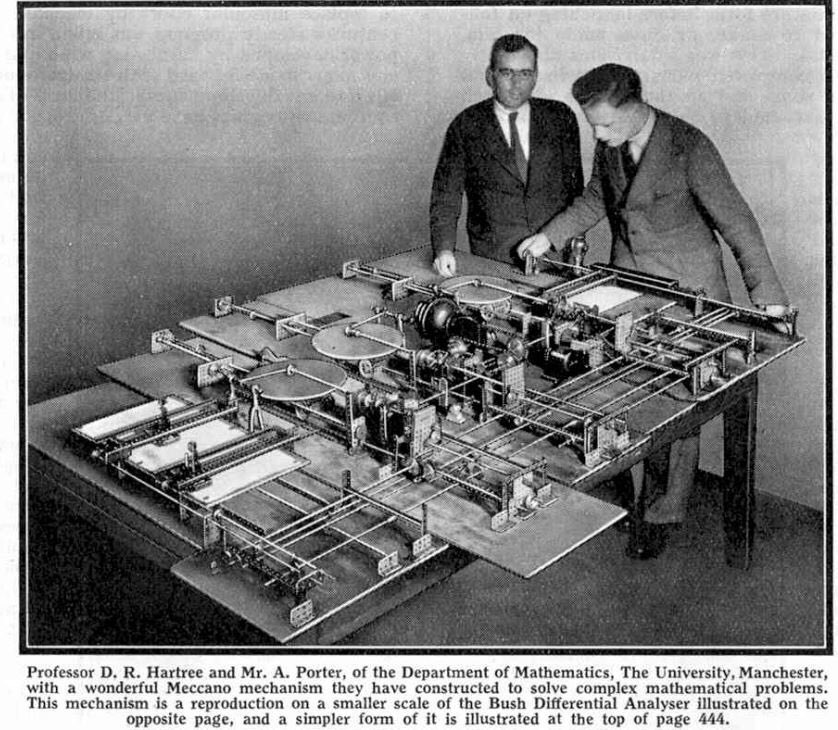In the summer of 1979, two things happened which changed forever the face of British stand-up comedy. On 19 May, the Comedy Store opened in Soho – and a few weeks later some of the performers who had met there formed a group called Alternative Cabaret, described onstage by founder member Tony Allen as “a sort of collective of comedians, musicians, dope smokers, dole scroungers, tax evaders, sexual deviants, political extremists.” Taken together the Comedy Store and Alternative Cabaret kicked off a movement that became known as alternative comedy. This led to a radical reinvention of stand-up in terms of both form and content, and created what grew into today’s live comedy scene.

1984 flyer for Brave New Comedy, a show at the Edinburgh Fringe, featuring a young Paul Merton, then known as Paul Martin.
Alternative comedy was a youthful, iconoclastic thing, and many have made the point that it did for light entertainment what punk had done for music just a couple of years earlier. So it came as a bit of a shock when I realised that we were starting to approach its 40th anniversary. How could something so young and vibrant have started so long ago?
Clearly, such a milestone could not pass without being marked in some way, and the University of Kent was particularly well placed to celebrate it. Our Special Collections & Archives department contains the British Stand-Up Comedy Archive (BSUCA), which has an unparalleled collection of material relating to the beginning of alternative comedy. Its donors include key figures in the movement like Tony Allen, Alexei Sayle, Andy de la Tour, and Jim Barclay. We also have material from people who helped it spread across London and beyond, like Ivor Dembina, Monika Bobinska, Mark Thomas, and Ray Campbell. Indeed, BSUCA was started after we acquired the archive of the late Linda Smith, who cut her comedy teeth on the alternative comedy circuit of the 1980s.

Originally a venue, The Comic Strip collective quickly embarked on a national tour, released an LP and produced TV series “The Comic Strip Presents…”
A large selection of this material has been used to stage the Alternative Comedy Now exhibition. In it you’ll find publicity materials, photographs, press coverage, scripts, LPs, business records, and more. All of this is arranged into seven themes: the Comedy Store; Alternative Cabaret; the Comic Strip; the Spread of the Circuit; the Small Comedy Club; the Edinburgh Fringe; and Politics. The team from Special Collections & Archives have done amazing work in putting the exhibition together, particularly Elspeth Millar, Mandy Green, Karen Brayshaw, Clair Waller and Tom Kennett.

Poster, 1980. Smaller pub-based clubs were the lifeblood of the comedy circuit. The publicity materials took the form of homemade art that could be reproduced on a photocopier, like this striking example.
I’m particularly pleased that Jim Barclay and Andy de la Tour had time to visit the exhibition on a recent visit to the University. As Andy put it: “The exhibition is remarkable, I was quite bowled over by how much you’d manage to display.”
Oliver Double











